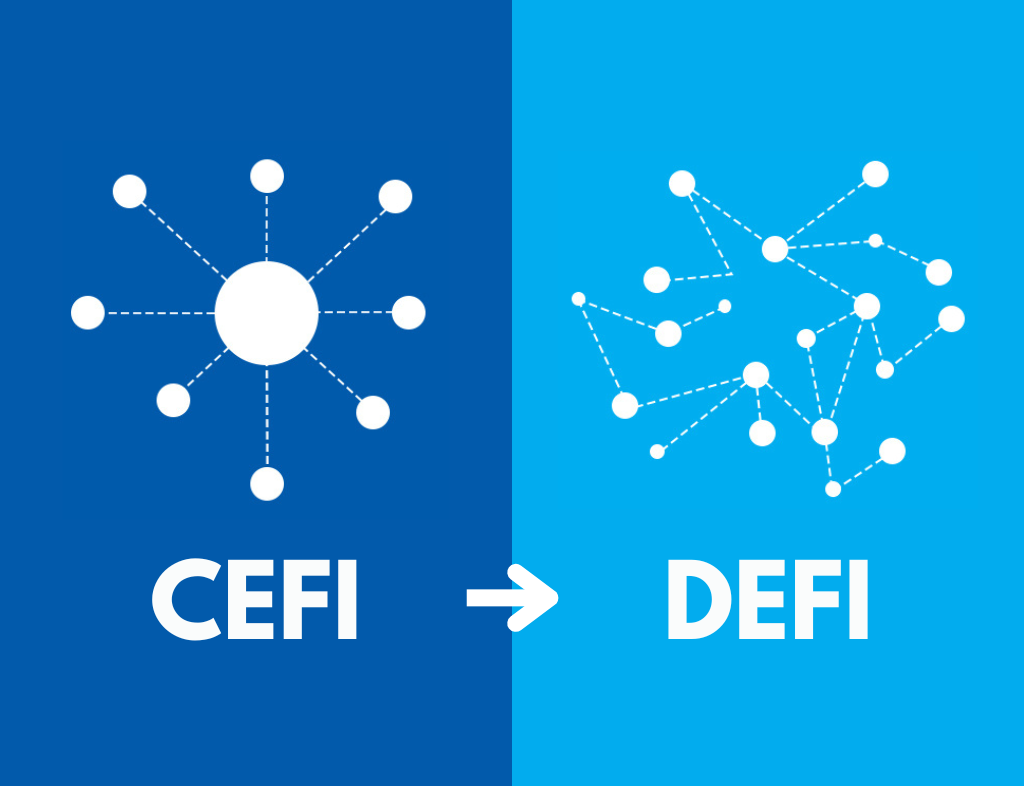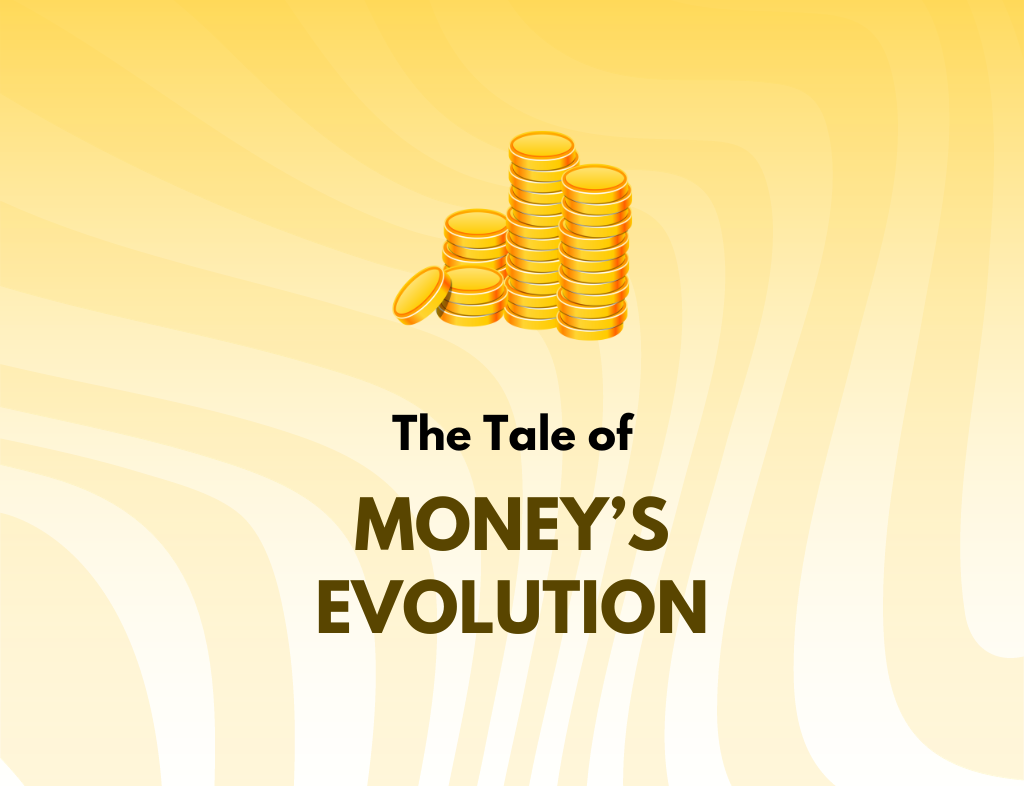Introduction
The finance industry has undergone significant transformation over the past few years. With the advent of digital technologies, two prominent terms have emerged: CEFI (Centralized Finance) and DEFI (Decentralized Finance). As the world explores the possibilities of these two contrasting approaches, it becomes imperative to compare and contrast the key differences, advantages, risks, and adoption challenges associated with CEFI and DEFI. In this comprehensive blog post, we delve into this ongoing debate, shedding light on the path that lies ahead for the future of finance.

Table of Contents
What is CEFI?
To kick off our exploration, it’s important to understand what CEFI stands for. CEFI, short for Centralized Finance, refers to the traditional financial model that operates within central authorities like banks, lending institutions, and stock exchanges. In essence, CEFI relies on intermediaries who control and manage user funds, transactions, and investments.
What is DEFI?
On the other side of the spectrum, DEFI or Decentralized Finance, embodies a radically different approach. DEFI leverages blockchain technology to create a transparent, open, and decentralized financial ecosystem. Instead of relying on intermediaries, DEFI introduces smart contracts and decentralized applications (DApps) to conduct various financial activities directly between users.
CEFI vs DEFI: The Fundamental Differences
In comparing CEFI and DEFI, it is essential to highlight their fundamental differences. Let’s explore them:
Centralization vs Decentralization:
- CEFI: Centralization is at the core of CEFI, as financial control lies in the hands of centralized authorities such as banks and regulatory bodies.
- DEFI: Decentralization defines DEFI, eradicating the need for intermediaries by leveraging blockchain technology and allowing users to have complete control over their funds.
Traditional Finance vs Decentralized Finance:
- CEFI: CEFI relies on traditional financial systems, such as legacy banking infrastructure and centralized databases.
- DEFI: DEFI disrupts the traditional finance landscape, utilizing blockchain technology and smart contracts to automate financial processes, eliminating the reliance on centralized systems.
Advantages and Disadvantages of CEFI and DEFI
Let’s take a closer look at the advantages and disadvantages of CEFI and DEFI:
Advantages of CEFI:
- Established trust: CEFI operates within well-regulated systems, promoting trust between users and financial institutions.
- Regulatory compliance: Since CEFI abides by regulatory frameworks, it ensures users are protected and financial operations are audited and monitored.
- User support services: Centralized financial entities provide dedicated customer support, enhancing the convenience of managing finances.
- Broad user adoption: CEFI is already deeply ingrained into the global financial infrastructure, making it easily accessible for the majority of the population.
Disadvantages of CEFI:
- Lack of transparency: CEFI often lacks transparency, as users need to trust centralized intermediaries without full visibility of the underlying processes.
- Slow innovation: Due to extensive regulatory requirements, CEFI may experience slower innovation compared to DEFI.
- Exclusion of the unbanked: CEFI’s centralized nature may unintentionally exclude individuals without access to traditional banking services.
Advantages of DEFI:
- Greater financial control: DEFI empowers users by providing them with complete control over their finances without the need for intermediaries.
- Enhanced transparency: DEFI leverages blockchain technology, enabling transparent and auditable financial transactions.
- Innovation and accessibility: DEFI fosters a culture of rapid innovation, allowing developers to create decentralized applications that enhance financial accessibility.
- Financial inclusion: DEFI has the potential to provide financial services to underbanked individuals, offering opportunities that were previously inaccessible.
Disadvantages of DEFI:
- Regulatory uncertainty: As DEFI operates outside the established regulatory frameworks, it faces regulatory challenges and uncertainties.
- Security risks: While blockchain technology enhances security, DEFI may still encounter vulnerabilities in the form of smart contract exploits and hacks.
- User responsibility: With greater financial control comes greater responsibility, as users must understand the complexities of DEFI to safeguard their assets effectively.
Evaluating Security and Scalability: CEFI vs DEFI
When it comes to security and scalability, both CEFI and DEFI present distinct considerations:
CEFI Security:
- CEFI often benefits from well-established security measures within the traditional financial system, such as firewalls, encryption, and fraud detection systems.
- However, centralized systems are susceptible to single point failures, wherein a breach can expose user data or result in unauthorized access to funds.
DEFI Security:
- DEFI’s security relies on the integrity of blockchain technology and smart contracts, which are designed to eliminate vulnerabilities.
- Nevertheless, DEFI faces unique risks, such as coding errors or undiscovered vulnerabilities within smart contracts.
CEFI Scalability:
- CEFI operates within centralized architectures, allowing for relatively high transaction throughput and scalability.
- However, excessive reliance on centralized databases may lead to bottlenecks and limited scalability potential in the long run.
DEFI Scalability:
- DEFI leverages blockchain’s distributed nature, offering the potential for improved scalability by distributing the network load across participants.
- However, the current limitations of blockchain infrastructure may present challenges in achieving the same levels of scalability as CEFI.
The Road to Adoption: CEFI and DEFI Explained
Adoption is a critical factor for the success and widespread use of any financial system. Let’s examine the adoption landscape for both CEFI and DEFI:
CEFI Adoption:
- CEFI enjoys significant adoption as the established financial system, with a large portion of the global population utilizing centralized banking services.
- However, the growth of CEFI adoption faces certain challenges due to concerns surrounding privacy, trust, and inclusivity.
DEFI Adoption:
- DEFI is still in its nascent stages, but it has gained considerable attention within the cryptocurrency community and among early adopters.
- The main hurdles for wider DEFI adoption include regulatory uncertainties, user awareness, and the need for improved user experience.
Regulatory Challenges: CEFI vs DEFI
Regulatory frameworks play a pivotal role in shaping the future of finance. Here’s how CEFI and DEFI navigate the complex world of regulations:
CEFI Regulatory Challenges:
- CEFI operates within established regulatory frameworks, complying with anti-money laundering (AML) and know-your-customer (KYC) regulations.
- However, excessive regulations may stifle innovation and create barriers to entry for emerging financial solutions.
DEFI Regulatory Challenges:
- DEFI’s decentralized nature challenges existing regulatory frameworks, making it susceptible to uncertainty and ad-hoc regulatory actions.
- Striking a balance between financial innovation and regulatory compliance is essential for the successful integration of DEFI into mainstream finance.
Exploring the Role of Smart Contracts: CEFI vs DEFI
Smart contracts are a cornerstone of DEFI, but they also find applications within CEFI. Let’s understand the role of smart contracts in these two financial paradigms:
CEFI and Smart Contracts:
- While CEFI does not fully rely on smart contracts, it can leverage this technology to automate specific financial tasks, such as loan agreements or financial derivatives.
- Centralized financial entities can introduce smart contracts selectively to enhance operational efficiency and transparency.
DEFI and Smart Contracts:
- Smart contracts form the foundation of DEFI, enabling the creation and execution of financial agreements without intermediaries.
- DEFI leverages smart contracts to facilitate a wide array of applications, including lending, decentralized exchanges, and yield farming.
Interoperability: Bridging the Gap between CEFI and DEFI
Interoperability plays a crucial role in connecting the centralized and decentralized finance ecosystems. Let’s explore the concept of interoperability between CEFI and DEFI:
Interoperability Challenges:
- CEFI and DEFI operate on different technical infrastructures, making seamless integration and interoperability between the two systems complex.
- The development of standardized protocols and cross-chain solutions is key to bridging the gap and enabling collaborative financial ecosystems.
User Experience: CEFI vs DEFI
User experience is a critical factor that can drive or hinder the adoption of financial systems. Let’s compare the user experience in CEFI and DEFI:
CEFI User Experience:
- CEFI offers a familiar user experience that mirrors traditional banking services, with user-friendly interfaces, easy access to support, and centralized customer service.
- The user experience in CEFI emphasizes convenience and enables users to manage their finances through a single platform.
DEFI User Experience:
- DEFI’s user experience often requires users to interact with decentralized applications, which can introduce a learning curve for less tech-savvy individuals.
- However, advancements in user interface design and simplified wallet solutions aim to enhance the accessibility of DEFI for a wider audience.
Financial Inclusion: CEFI vs DEFI
Addressing the financial needs of the unbanked and underbanked populations is a critical goal for modern financial systems. Let’s examine the role of CEFI and DEFI in achieving financial inclusion:
CEFI and Financial Inclusion:
- CEFI’s centralized model tends to exclude individuals who lack access to traditional banking services, leaving them financially marginalized.
- However, CEFI can contribute to financial inclusion by expanding its reach through digital banking solutions and innovative partnerships.
DEFI and Financial Inclusion:
- DEFI holds significant promise in improving financial inclusion by providing accessible financial services to anyone with an internet connection.
- Leveraging blockchain technology, DEFI can enable greater financial agency for underserved populations, reducing barriers to entry.
Privacy and Ecosystem Considerations: CEFI vs DEFI
Privacy is a key concern for individuals when it comes to managing their financial information. Let’s explore the privacy attributes and ecosystem considerations of CEFI and DEFI:
CEFI Privacy Considerations:
- CEFI relies on centralized institutions that have access to user data, raising concerns about data privacy and potential breaches.
- Users must trust financial entities to handle their personal information securely and responsibly.
DEFI Privacy Considerations:
- DEFI leverages blockchain technology, which inherently provides a higher degree of privacy and security through encryption and pseudonymous transactions.
- However, blockchain’s transparent nature may expose user transactional data without appropriate privacy measures.
Ecosystem Considerations:
- CEFI operates within an established financial ecosystem with pre-existing infrastructure, partnerships, and regulations that shape its development.
- DEFI, as a nascent ecosystem, has the potential to redefine the financial landscape by exploring new models of collaboration and creating decentralized financial infrastructure.
Understanding Token omics: CEFI vs DEFI
Tokenomics plays a crucial role in both CEFI and DEFI ecosystems. Let’s explore the concept of tokenomics in each domain:
CEFI Token omics:
- CEFI generally does not rely on native tokens. However, some platforms within CEFI employ utility tokens for specific functions, such as loyalty programs or discounts.
- The value proposition of CEFI tokens primarily revolves around platform-specific benefits rather than shaping the financial ecosystem as a whole.
DEFI Tokenomics:
- DEFI heavily relies on native tokens which act as the backbone of decentralized protocols and economic incentives within its ecosystem.
- DEFI tokens often provide governance rights, rewarding users who actively participate in network activities and contribute to the ecosystem’s growth.
CEFI, DEFI, and Regulatory Frameworks
Regulatory frameworks play a vital role in shaping the future landscape of both CEFI and DEFI. Let’s explore how these frameworks impact the two financial paradigms:
CEFI and Regulatory Frameworks:
- CEFI operates within existing regulatory frameworks, which provide oversight, consumer protection, and a structured environment for financial activities.
- Compliance with regulations ensures transparency and accountability, promoting trust between financial institutions and users.
DEFI and Regulatory Frameworks:
- DEFI faces challenges in integrating into existing regulatory frameworks, as it operates in a decentralized manner, often beyond the jurisdiction of traditional regulatory bodies.
- An evolving regulatory landscape aims to strike a balance between innovation and protecting users from potential risks associated with DEFI.
User Ownership in CEFI vs DEFI
User ownership represents a pivotal shift brought by DEFI. Let’s delve deeper into the concept of user ownership in both CEFI and DEFI:
CEFI User Ownership:
- In CEFI, users do not have full ownership of their assets, as they rely on centralized intermediaries to manage and safeguard their funds.
- While users hold legal ownership, they do not possess the same level of control and autonomy as in DEFI.
DEFI User Ownership:
- DEFI champions the concept of user ownership, allowing individuals to have full control and ownership of their assets through the use of self-custodial wallets and private keys.
- By leveraging blockchain technology, DEFI grants users unparalleled financial sovereignty, revolutionizing the traditional concept of ownership.
The Prospects of CEFI and DEFI: What Does the Future Hold?
Looking ahead, both CEFI and DEFI present unique prospects and challenges. Let’s delve into the future prospects of these financial models:
CEFI Future Prospects:
- CEFI is likely to continue evolving and adapting to the shifting demands of the digital age, leveraging technology to enhance efficiency and user experience.
- With the integration of digital banking solutions and strategic partnerships with emerging fintech startups, CEFI can maintain its relevance and continue to serve a large portion of the population.
DEFI Future Prospects:
- The future of DEFI is brimming with innovation and untapped potential. As the ecosystem matures, it is poised to redefine the global financial landscape by offering transparent, accessible, and inclusive financial services.
- With the development of improved user interfaces, scalability solutions, and industry-wide collaboration, DEFI has the potential to go mainstream, challenging the dominance of traditional finance.
Conclusion:
With the rise of CEFI and DEFI, the finance industry is undergoing a significant transformation. While CEFI represents the established financial system, DEFI introduces a disruptive model that champions decentralization and user ownership. Both approaches present advantages, disadvantages, and unique prospects for the future of finance. The ongoing debate surrounding CEFI vs DEFI is crucial for shaping the financial ecosystem, fostering innovation, and enhancing financial inclusion. As the world embraces the possibilities of CEFI and DEFI, it’s essential to continue weighing their merits, addressing the
Share this content:

